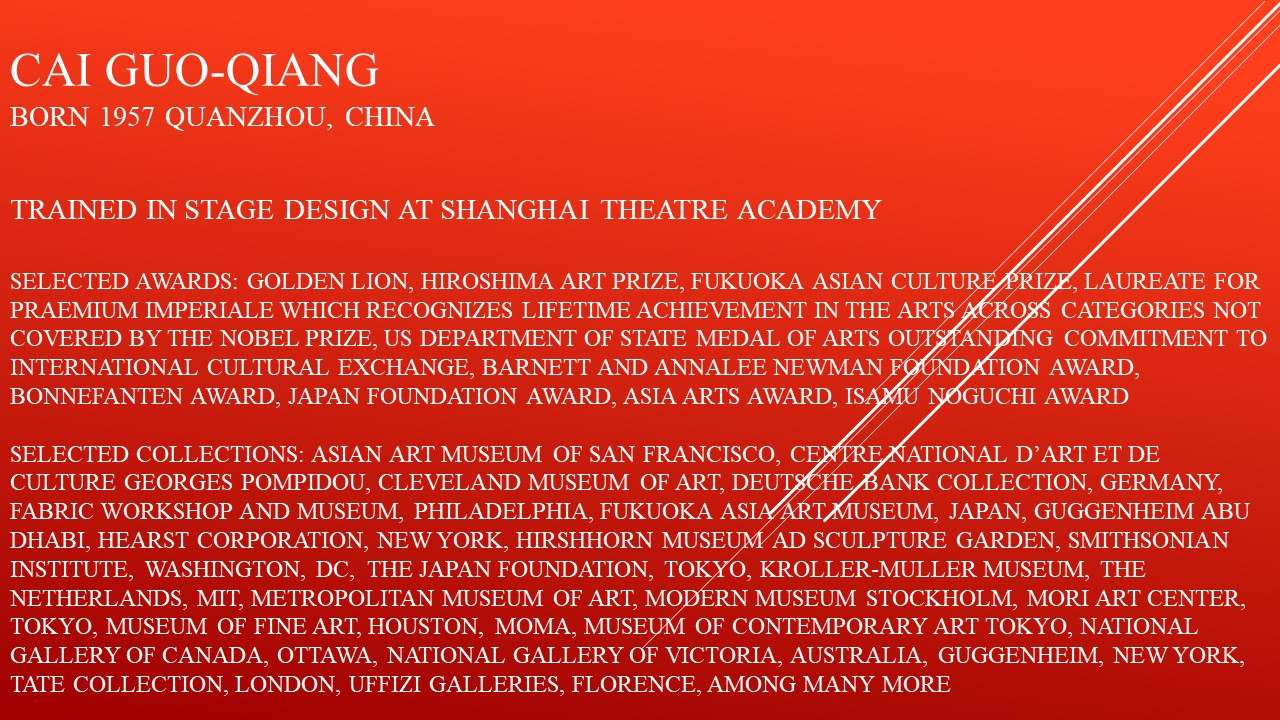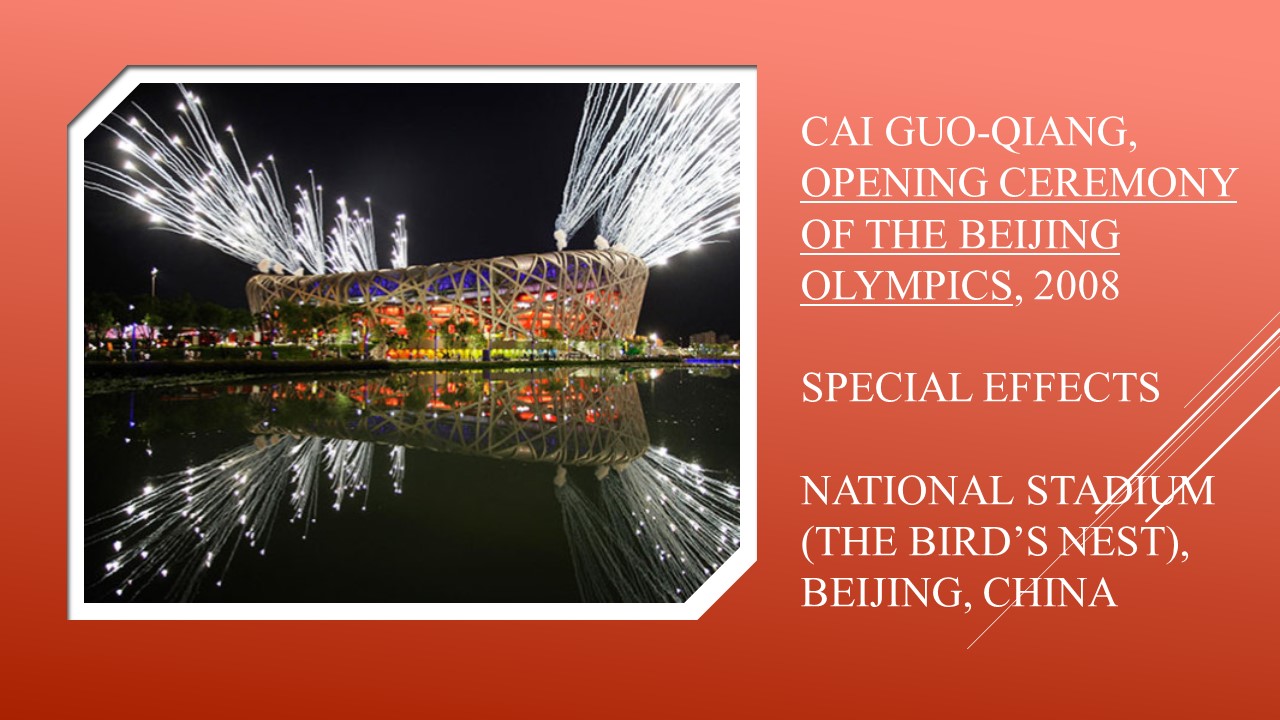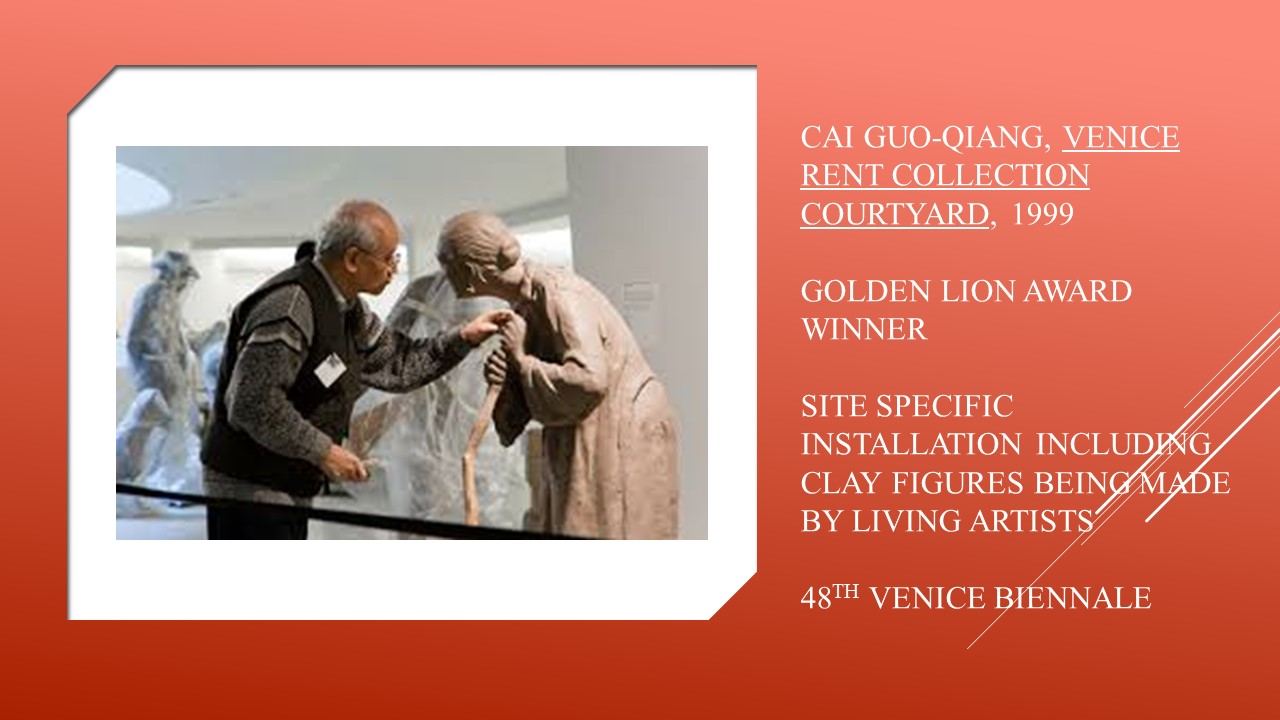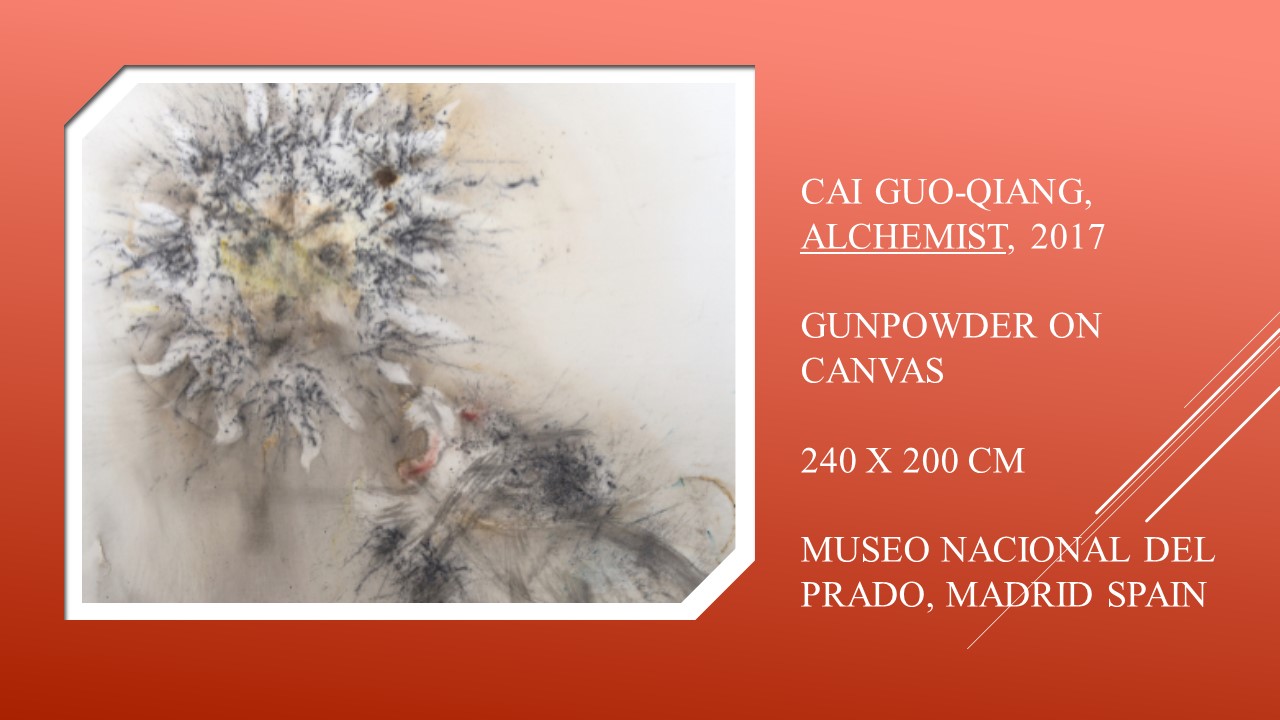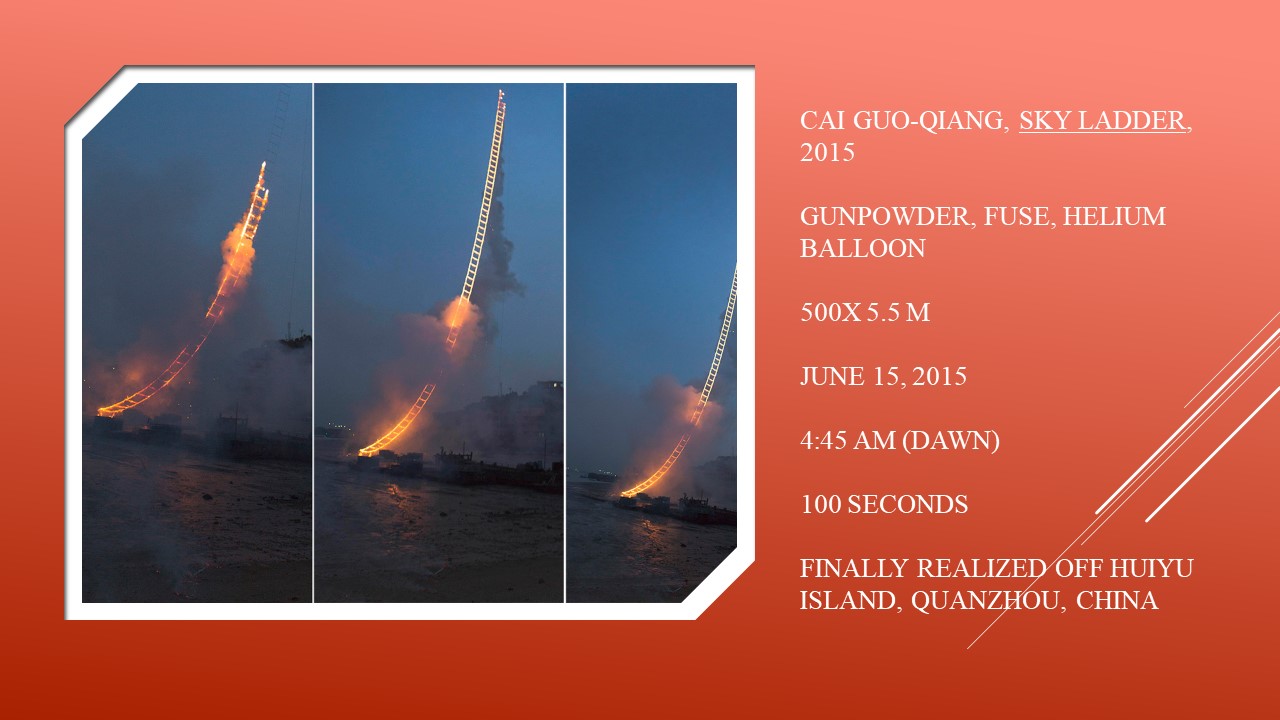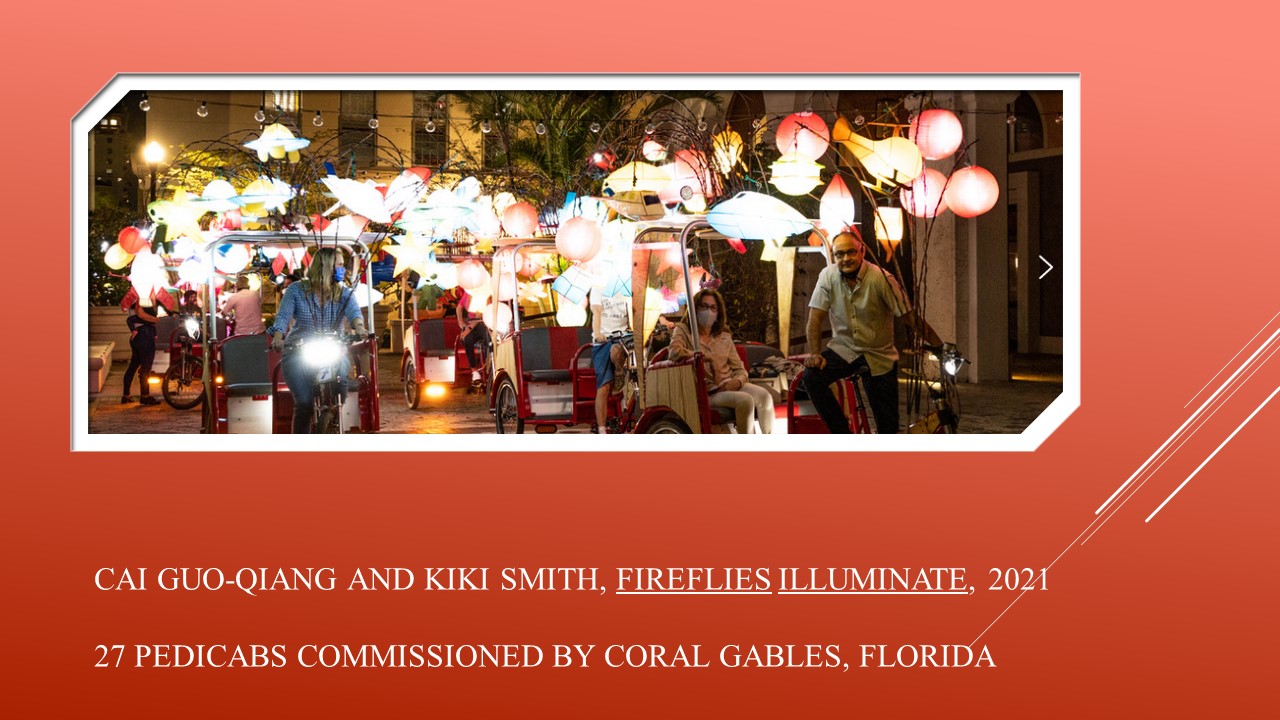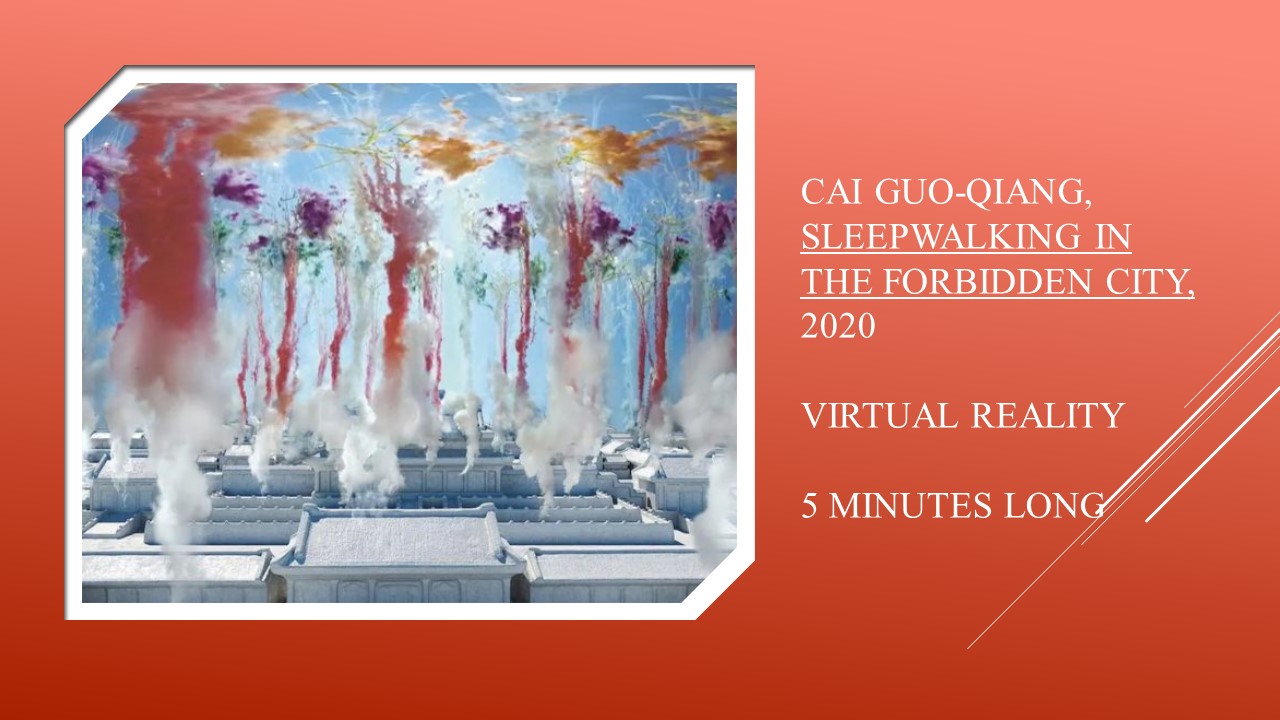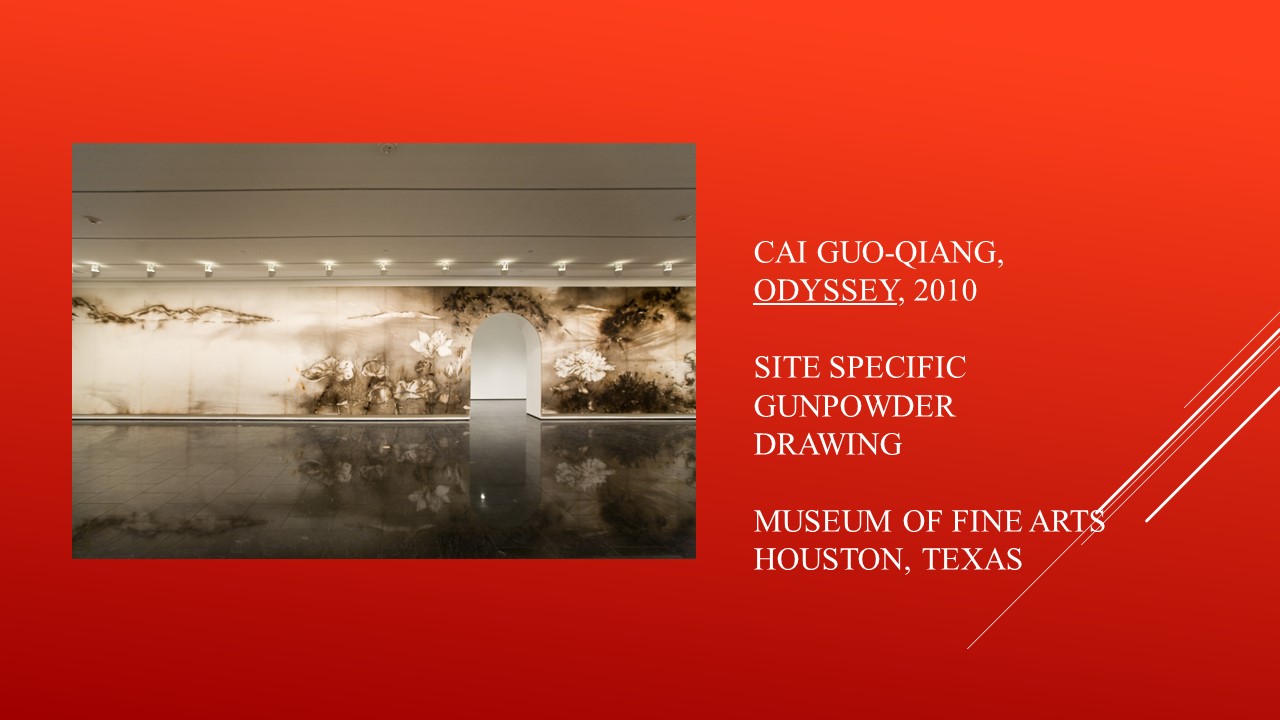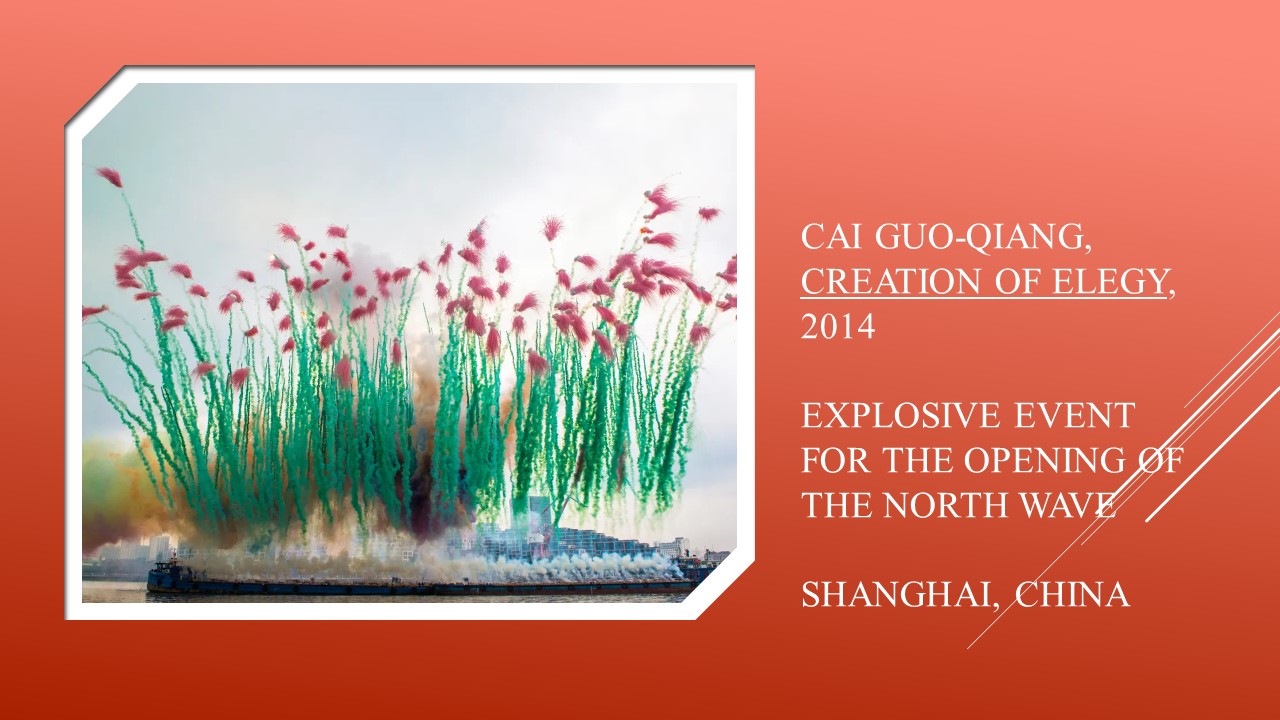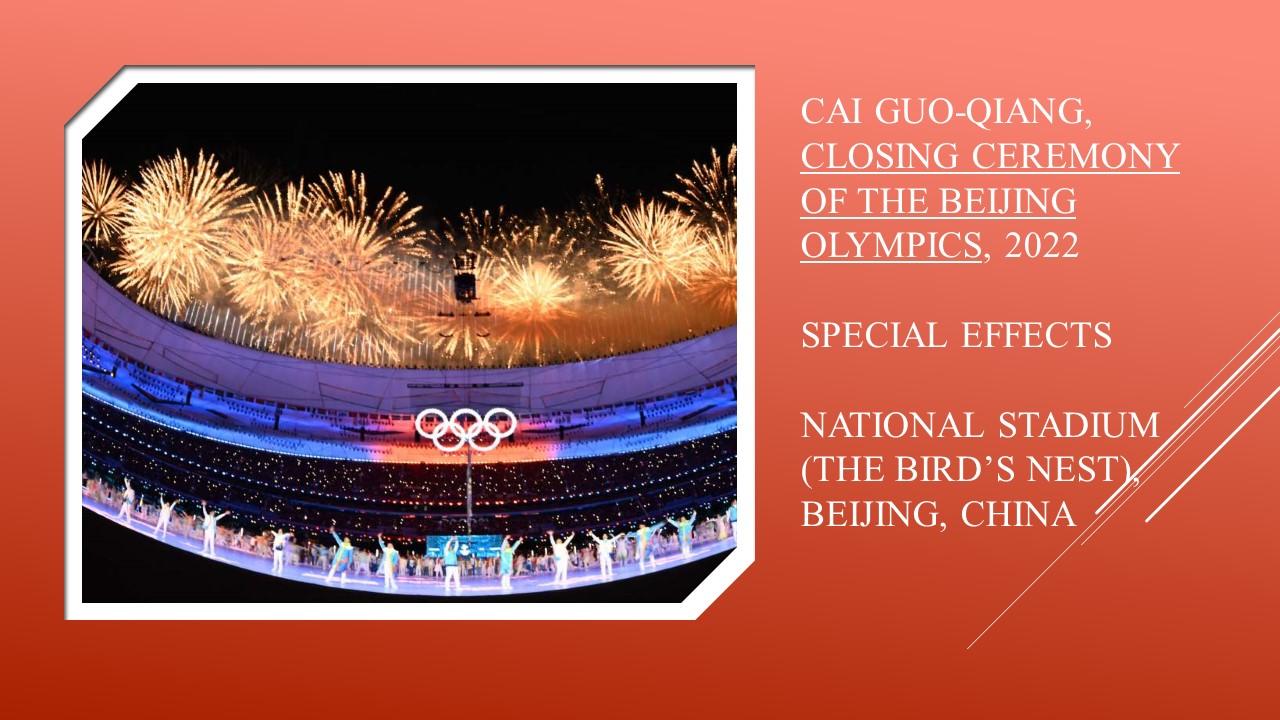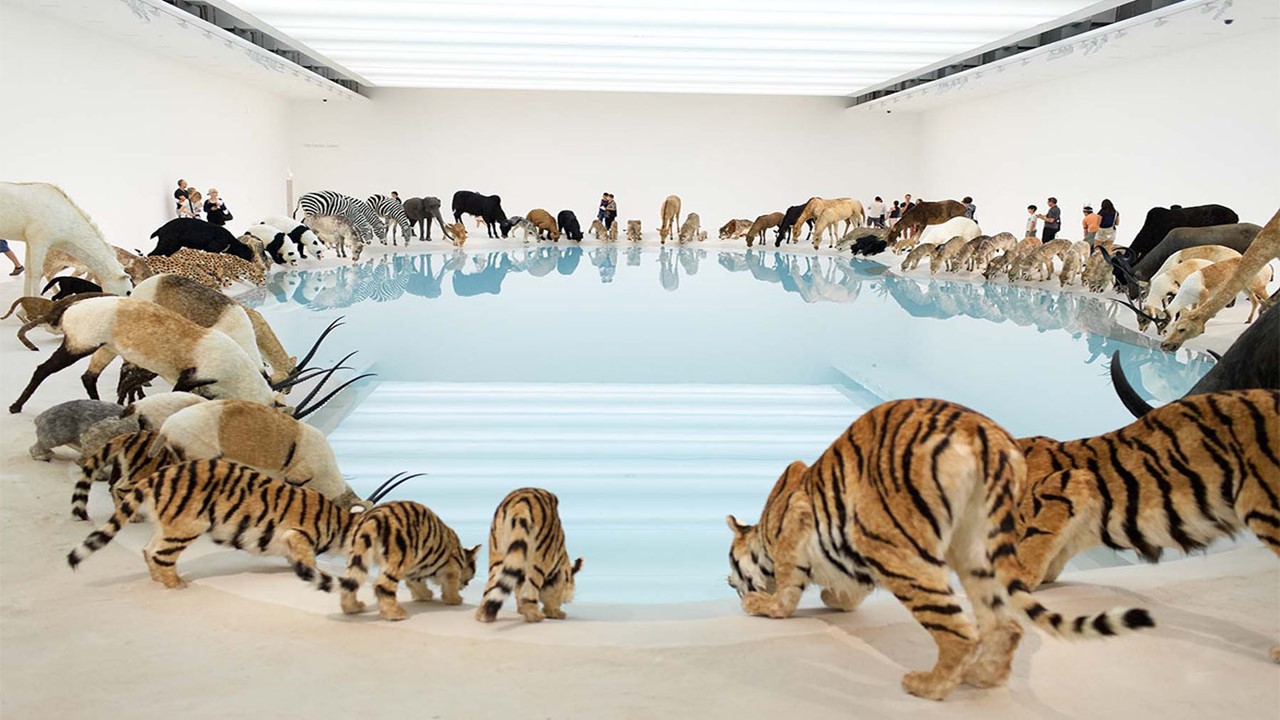Cai Guo-Qiang
As Cai explains, “I am often asked whether my art originates in China, or Japan, or New York. To this, my answer has always been, ‘Yes, yes, and yes.’ I was born in China, lived in Japan for approximately 10 years, and have spent the last 20 years in New York. Today, my art transcends national borders and is the result of the crossing of various cultural backgrounds.” Cai’s works draw upon Eastern philosophy and contemporary social issues. His project aims to establish an exchange between viewers and the larger universe utilizing a site-specific approach to culture and history. His hybridization of art requires his audience to maintain an open mind by wiping the mind of preconceptions, no matter whether his work is found in a museum, a stadium, the street, or a river.
He is a transdisciplinary artist linking destruction with creativity. Cai paints with gunpowder, designs dynamic installations, creates videos, and performs explosive events. Cai constantly challenges himself by holding on to problems that are interesting. Because these problems allow for new discoveries, they become part of his journey as an individual and he surrenders control and allows accidents to occur. He describes his moments of ignition as going beyond nerves. As he said, “Becoming an energy that is sudden, spiritual, and cosmic is a feeling of the invisible world sparked within that instant.”
His name became internationally famous when he won the Golden Lion at the 1999 Venice Biennale for his Venice Rent Collection Courtyard. It comprised Socialist Realist propaganda sculpture being made by artisans from China (one of them, Long Xuli, had worked on the original in 1965). Cai filled the enormous room in Venice’s Arsenal to recreate the initial installation; he emphasized the process of replication rather than the finished product. Visitors saw the sculptors at work, continually referring to photographs of the original plaster version. They built wire frames for most of the figures but completed less than half, filling out the forms with clay and glass eyes. The original endured as an educational tool, reminding people of the dismal life under feudalism. According to Britta Erickson on Chinese-art.com, Cai used it as a metaphor for human endeavor’s futility, as the clay figures could dry and crumble, falling back into dust. The crumbling sculptures could also imply the failed promise of socialism in China.
Cai served as the creative director of the “Bird’s Nest” for both Beijing Olympics. As he described it, “Gunpowder was invented in China. While it can be used in violent acts, it can also be utilized as a creative tool for expression, like fireworks, for example. At the Opening Ceremony of the Beijing 2008 Summer Olympics, I used fireworks to depict giant footprints advancing across the sky. That was a case of a national event that also became a personal work of art. I have always wished that the nation is something that can be ‘influenced’ by individuals, so in this respect, I was satisfied. I believe artists should make an effort to modernize their own nations and make them more open, little by little.”
In 2021, Cai took Fireflies Illuminate to Coral Gables in Florida for a historic public artwork. The twenty-seven pedicabs provided an experience that maintained the balance of spectacle and introspection with rides around downtown. Do yourself a favor and look at the Art 21 section under “Power” to learn more about this creative genius and check out his documentary on Netflix entitled Sky Ladder. The trailer can be seen here.
Please see Brilliant Ideas (episode 30) to learn more about his biography and his international work here.
More of his work can be seen at his website or his gallery, Galleria Continua.
PLEASE SEE PORTFOLIO BELOW




